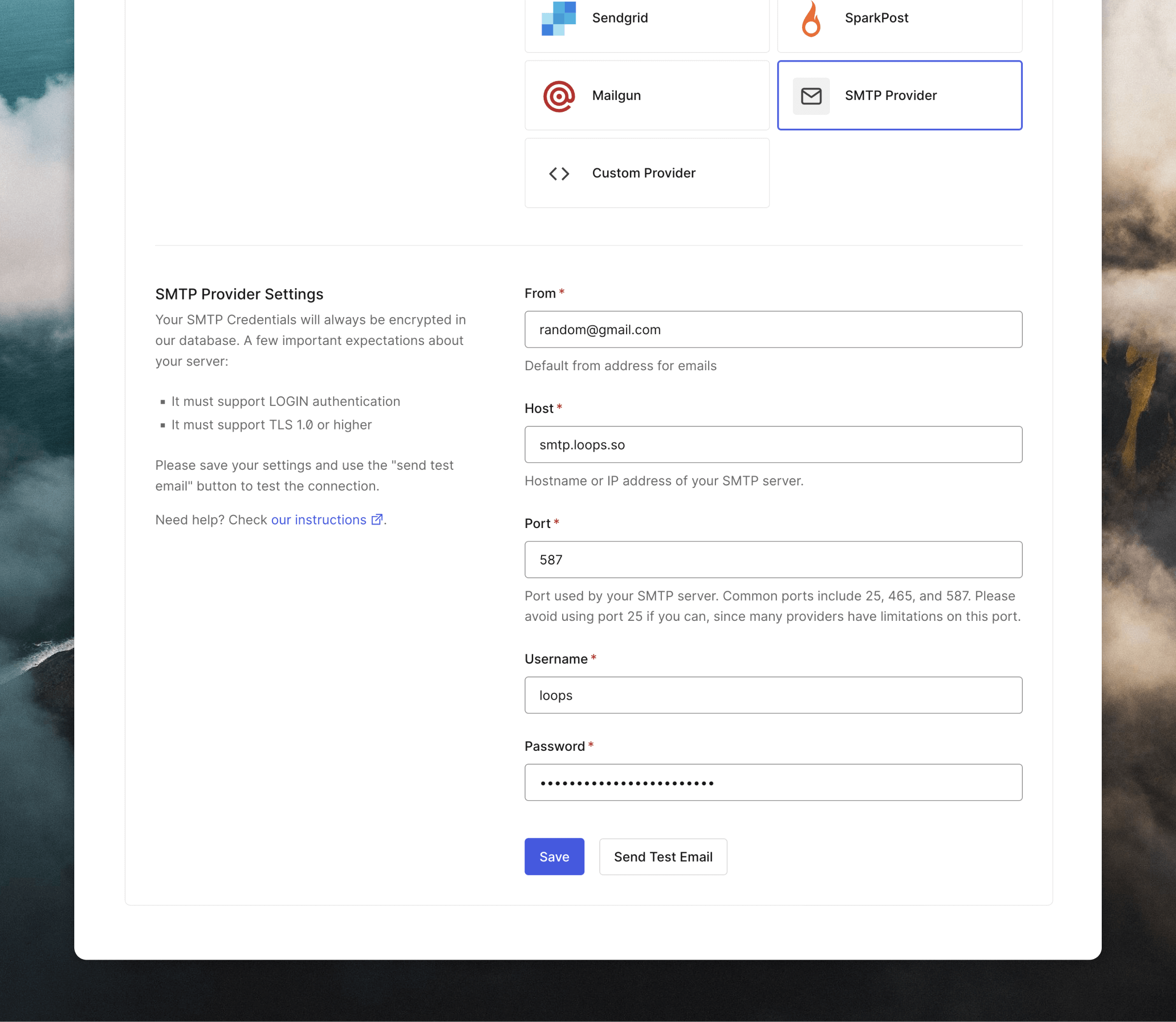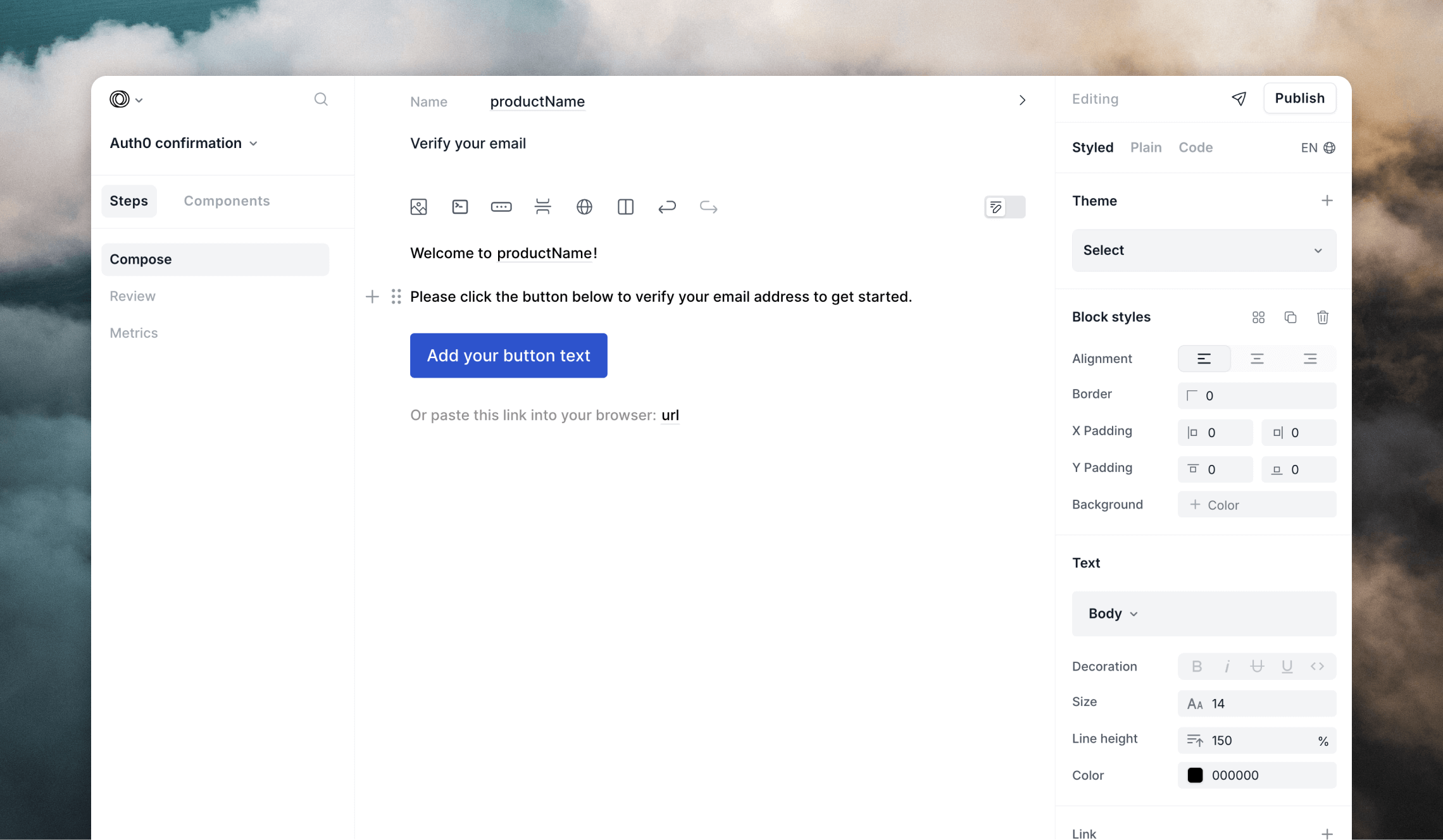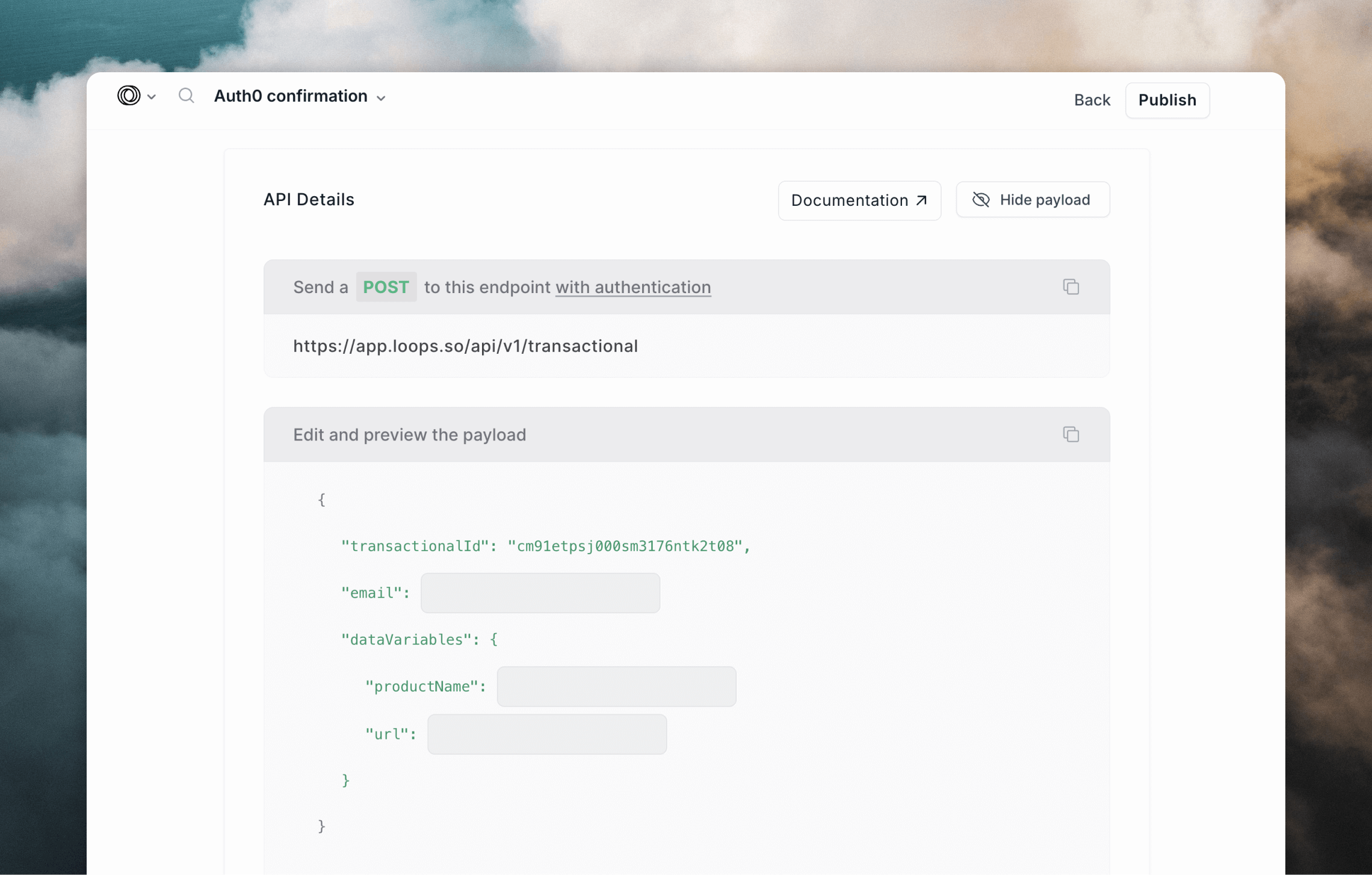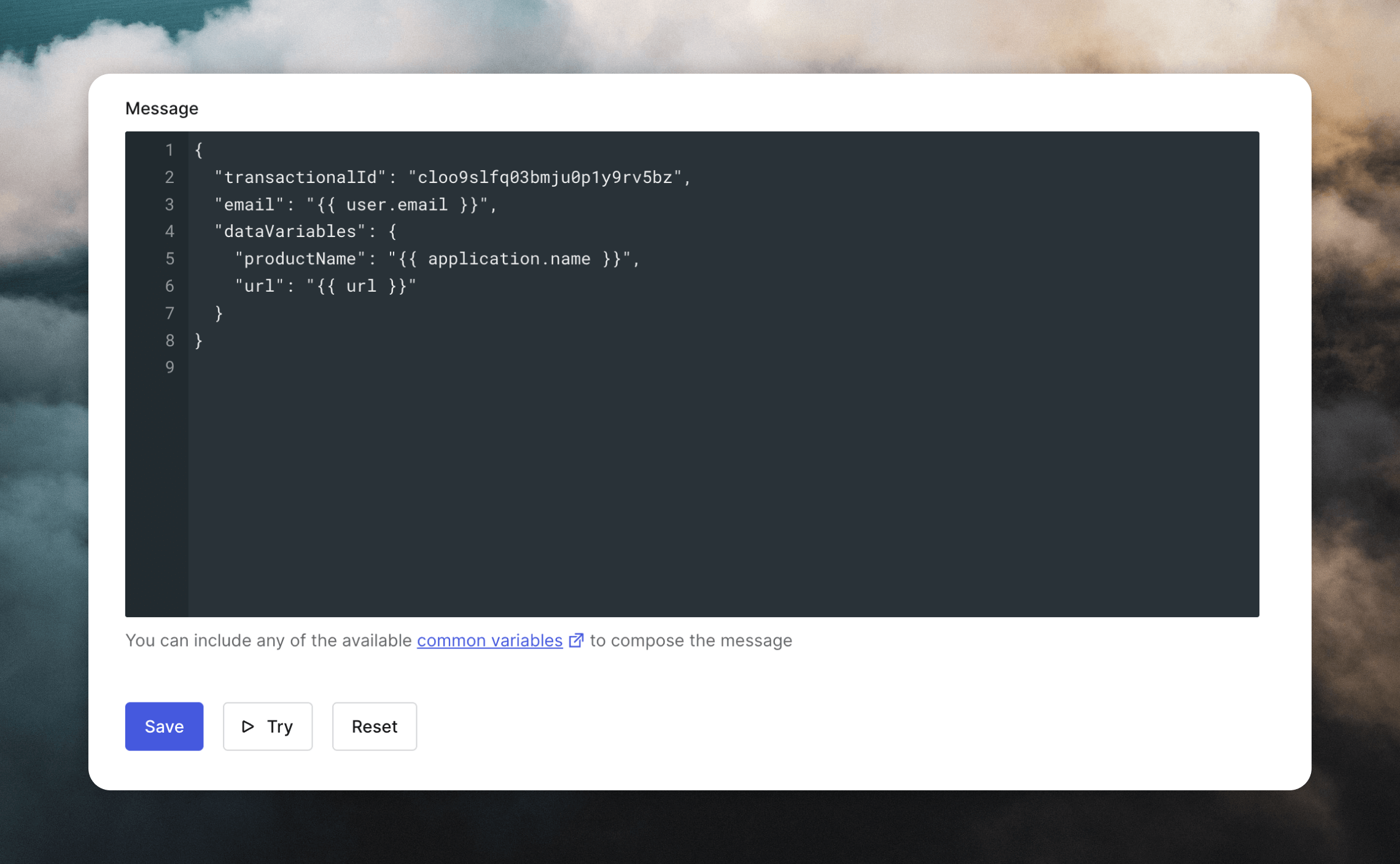1
More control over design
You can use Loops’ design editor to create (and
then easily edit) beautiful transactional emails instead of having to code
them with HTML.
2
Better visibility of sent emails
You get full visibility on which emails are being sent, when, and to whom in
your Loops account. Auth0 doesn’t offer this view.
Set up Loops SMTP in Auth0
Go to Branding -> Email Provider in your Auth0 dashboard. Scroll down and click on SMTP Provider. In the SMTP Provider Settings section below, enter a value into the “From” field. This value will always be overwritten by the values set in your Loops templates from the next step, so it can be anything. In the SMTP Provider Settings section enter the following data:| Field | Value |
|---|---|
| Host | smtp.loops.so |
| Port number | 587 |
| Username | loops |
| Password | An API key copied from your API settings in Loops |

The Send Test Email button here will not work due to how the Loops SMTP
system works. You can test your connection in a later step.
Create Transactional emails in Loops
Next, create new transactional emails for the emails you are sending from Auth0. Go to Branding -> Email Templates to view the full list. In Loops, go to the Transactional page and click New. Alternatively, you can select one of our many ready-made templates from the Templates page.

Configure email templates in Auth0
The final step is to make sure your emails in Auth0 are configured to send the correct data to Loops. Loops SMTP integrations work a bit differently than most. Instead of sending a text or HTML email body, you set them up to send API-like data. In Auth0, go to Branding -> Email Templates, then edit each template to contain the payload as shown in the previous step (you can click the clipboard icon in Loops to copy the full payload). If you are using Passwordless authentication, add your Loops payload into the Body field at Authentication -> Passwordless -> Email. Once pasted into the Message body, you need to add the Auth0 message variables into the payload. You can do this using double curly brackets like{{ url }}.
Here is an example “Verification Email (using Link)” email template. This payload was copied from the template’s Publish page in Loops, then the {{ user.email }} and {{ url }} Auth0 variables were added.
addToAudience flag to your template as below. This will create a contact in Loops using the {{ user.email }} value.

Important notes
- The subject in Auth0 templates is always overwritten by the subject added to the corresponding template in Loops.
- The sender email configured in your Auth0 SMTP settings is always overwritten by the “From” address added to your templates in Loops.
- Any enabled Auth0 template not set up with the correct API-like payload will fail to send.

